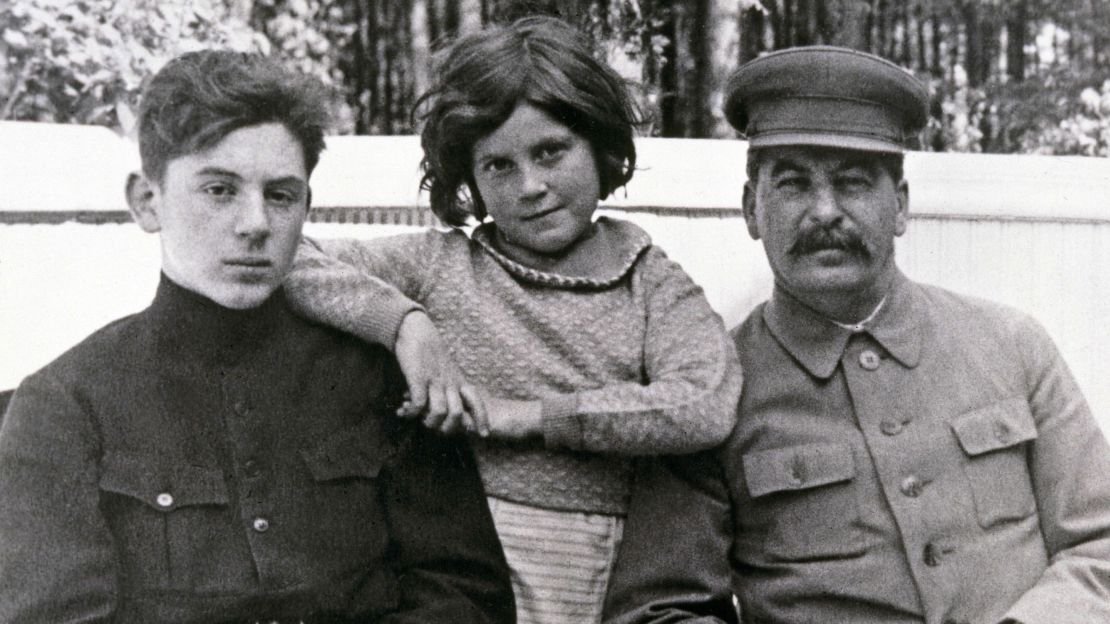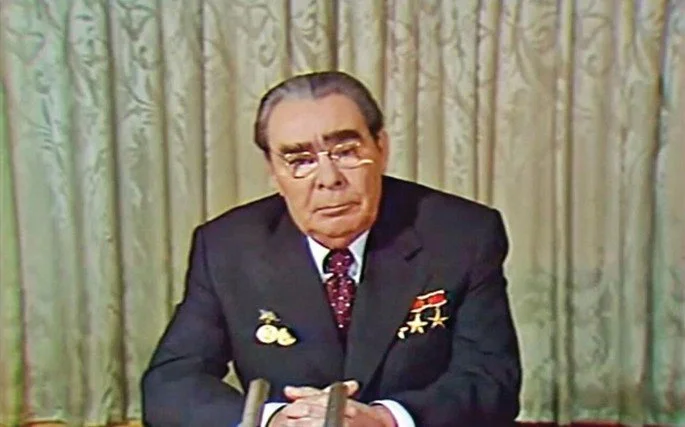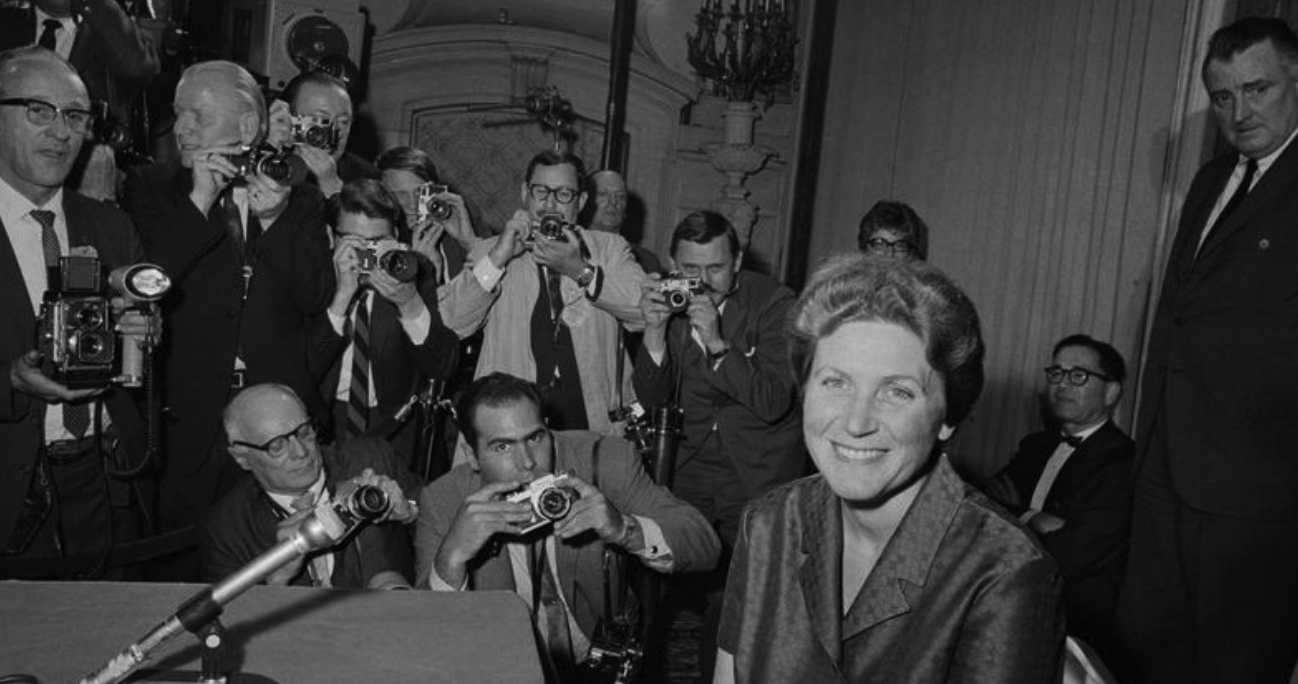The Tale of the Red Princess
Monday, March 6th 1967. Tightly clutching a single, small suitcase— an auburn-haired woman appeared in front of the main door of the US embassy in New Delhi, India around 7:30 pm. With a heavy Russian accent, she told the Marine Guard, Cpl. Daniel Wall, that she wanted to speak to an officer. Five minutes later, she identified herself to US Consul George O. Huey as “Svetlana Iosifovna Alliloueva.” Her passport verified her status as a Soviet citizen, born in Moscow on Feb. 22nd 1926, but what really shocked Huey and his colleagues was what she said next— that she was the only daughter of deceased dictator, Joseph Stalin.
Svetlana Alliloueva (center) with her brother Vasily (left) and her father, Joseph Stalin (right)
Alliloueva told them she had been living defiantly as the common law wife of a sickly Indian communist named Brajesh Singh, who she met while both were recovering from minor operations in a Moscow hospital for the elite. Singh died the previous year, and Alliloueva had been granted permission by Soviet premier Alexei Kosygin to travel to India that December to disperse his ashes into the Ganges river. Although she was only meant to stay for two weeks, Alliloueva claimed she had fallen in love with India, and Singh’s family. Ignoring orders to return to the USSR for two months, she first discussed her desire to remain in the country with Indian official T.N. Kaul and Singh’s politically connected nephew Dinesh Singh— who both told her they could not help. Earlier that day, March 6th, she had lunch with Soviet Ambassador Ivan Benediktov and repeated her supplication. When she was again denied, and told additionally she would have to take an Aeroflight back home early on Wednesday of that week, Alliloueva decided to defect— taking advantage of a party at the Soviet Embassy to slip away undetected.
Flabbergasted, US officials Roger Kirk, Dave Blee and Dick Celeste— who had been pulled away from a dinner party he was hosting that night with his wife, Dagmar— sought out their boss, Ambassador Chet Bowles, at his bungalow on Ratendon Road. Bedridden with bronchitis, Bowles listened while they laid out three options: inform the Indian government and risk a protracted legal circus; turn Svetlana away and break with America’s self-image as a refuge; or put her on a 1:00 am Qantas flight that very night to Rome, where she could stay while they discussed the matter further. Bowles went with the third choice. “Cable Washington,” he rasped, “and let them know what we propose to do.”
3rd and 8th U.S. Ambassador to India Chester Bliss Bowles in April 1967
Shortly after midnight— George Huey, Roger Kirk and a Marine Sgt. drove Alliloueva to Palam Airport, issued her an American B-2 tourist visa and $1500. Alone, she anxiously waited in the lounge for an hour and a half due to a delay caused by a leak in the plane’s hydraulic system. Finally, at 2:45 am, she departed for Rome. A Russian-speaking CIA officer accompanied her, identifying himself only after they had taken off, wary of kidnapping accusations. Unfortunately, according to Ambassador Bowles, “when she got to Rome, the government blew up immediately, and said they didn’t want a war with Russia over Svetlana Alliloueva, and wouldn’t let her stay. We had an awful time getting a delay for even three or four days. We tried to get her into Switzerland, but the Swiss at first refused for the same reason. Finally, at the very last minute we decided she had to go on to Washington at once. There was no alternative. The Washington plane had actually been called for boarding when word came through that the Swiss would take her temporarily. So my young man took her to Geneva and she stayed there three months.”
The Kremlin was caught off guard and deeply embarrassed by the incident. There were no official press releases, only accusations that Alliloueva was mentally unstable and the CIA must have abducted her. Behind closed doors in Moscow however, insiders began looking for scapegoats to punish. Premier Kosygin’s decision to let her go in the first place became a focal point of criticism. Lacking an independent power base, he was certainly vulnerable. But Western analysis at the time ultimately concluded by May 1967 that his position in the leadership was not profoundly effected. General Secretary of the CPSU, Leonid Brezhnev, valued stability above all else— and as an experienced technocrat, Kosygin was still useful to him.
KGB Chairman Vladimir Semichasny was not as lucky. After a failed attempt to retrieve Alliloueva resulted in the exposure and arrest of several Soviet agents in Europe, he found himself on thin ice. During a ten-minute Politburo discussion on May 18th 1967, he was dismissed and replaced with the trusted Yuri Andropov, former Soviet Ambassador to Hungary. Semichasny’s mentor, hard-liner Alexander Shelepin, was also sacked.
Soviet leader Leonid Brezhnev was not happy to find out Stalin’s daughter had defected to the United States
On the diplomatic front— Russian Foreign Minister Andrei Gromyko, typically a cool-headed pragmatist, lectured Indian interlocutors in a harsh tone during talks on a proposed Nuclear Non-Proliferation Treaty that spring, seemingly as a way of expressing Moscow’s displeasure regarding the episode. This aligned with Dick Celeste’s later claim that the USSR “had decided that Svetlana’s departure was an Indian, not an American, problem.” Ambassador Benediktov, caught flat-footed by Alliloueva’s disappearance on March 6th— lodged strong protests implying Indian officials colluded with the US Embassy, and pressed New Delhi for an explanation. Nikolay Firyubin, deputy foreign minister, made light of the fact that, by failing to take away Alliloueva’s passport, Benediktov had unwittingly facilitated her defection. A month later, Benediktov was “demoted” and reassigned to Yugoslavia.
In a call placed to Soviet deputy chief mission, Smirnov, an Indian joint secretary of external affairs expressed the Indian position that they had played no part in the situation with Svetlana Alliluvena. Regardless, to mollify the Soviets, Indian Prime Minister Indira Gandhi sent a personal emissary, LK Jha, to meet Alliloueva in Geneva. He implored her to consider returning home, citing her children’s wishes (even putting one of them on the phone with her) and the harm her defection was causing to “the two countries she loved.” Still, she refused. As Soviet haranguing continued, the Indian External Affairs Ministry delivered a stern warning: If the Kremlin persisted in disregarding India’s assurances of non-involvement, it “would no longer be proper basis for the development of future relations.”
Stalin’s daughter resurfaced at JFK Airport on April 21st, 1967. George F. Kennan, former ambassador to the USSR and architect of the US policy of communist “containment”, was waiting for her. At the request of Ambassador Chet Bowles, Kennan had met Alliluvena in Geneva weeks earlier, and they became fast friends. He offered to house her on his family’s farm in East Berlin, Pennsylvania but she turned him down— having already made plans to stay with her translator on Long Island. Reporters mobbed her first press conference. “Hello, I’m happy to be here,” she said to them. Her memoir “Twenty Letters to a Friend”, appeared that autumn. She had managed to smuggle the manuscript out of Russia during her escape.
Svetlana Alliluvena at a press conference in 1967
The tale of the red princess soon came to an end, as all stories do. The CIA lost interest once it realized she had no state secrets to share. The media, hungry for continuous drama, moved on. So, Svetlana Alliluvena drifted— marrying an American man named William Wesley Peters, living for a time on Frank Lloyd Wright’s Taliesin commune, divorcing Peters, moving to rural England, and then, in an impulsive bid for reconciliation, returning to the USSR in 1984. The Kremlin staged her arrival for television, but within two years she left again, frustrated by her official handlers and an icy reception from her children.
She spent her final decades in relative obscurity, splitting time between a cottage in Dorset and an apartment in southern Wisconsin. Neighbors knew her only as Lana Peters. When she succumbed to colon cancer in 2011, a New York Times obituary noted that, “a county official in Wisconsin thought she may have died several months ago.” There were no limousines, reporters or hubbub to be found— only the midwestern wind.
Svetlana’s defection delivered no classified files, yet it shook Soviet leadership more than any stolen microfilm. If the daughter of Stalin himself could renounce the system, what did that say about Soviet claims of ideological perfection? The Kremlin responded to her actions with censorship and a round of finger-pointing. America answered with a publishing contract and a press tour. Between those extremes wandered Svetlana Allilouvena— never quite at home in the Russian palace, the Swiss safe-house or the Wisconsin farm— but forever the daughter of a monster who looked his totalitarian regime in the eye and said courageously, “I’m not going back.”



